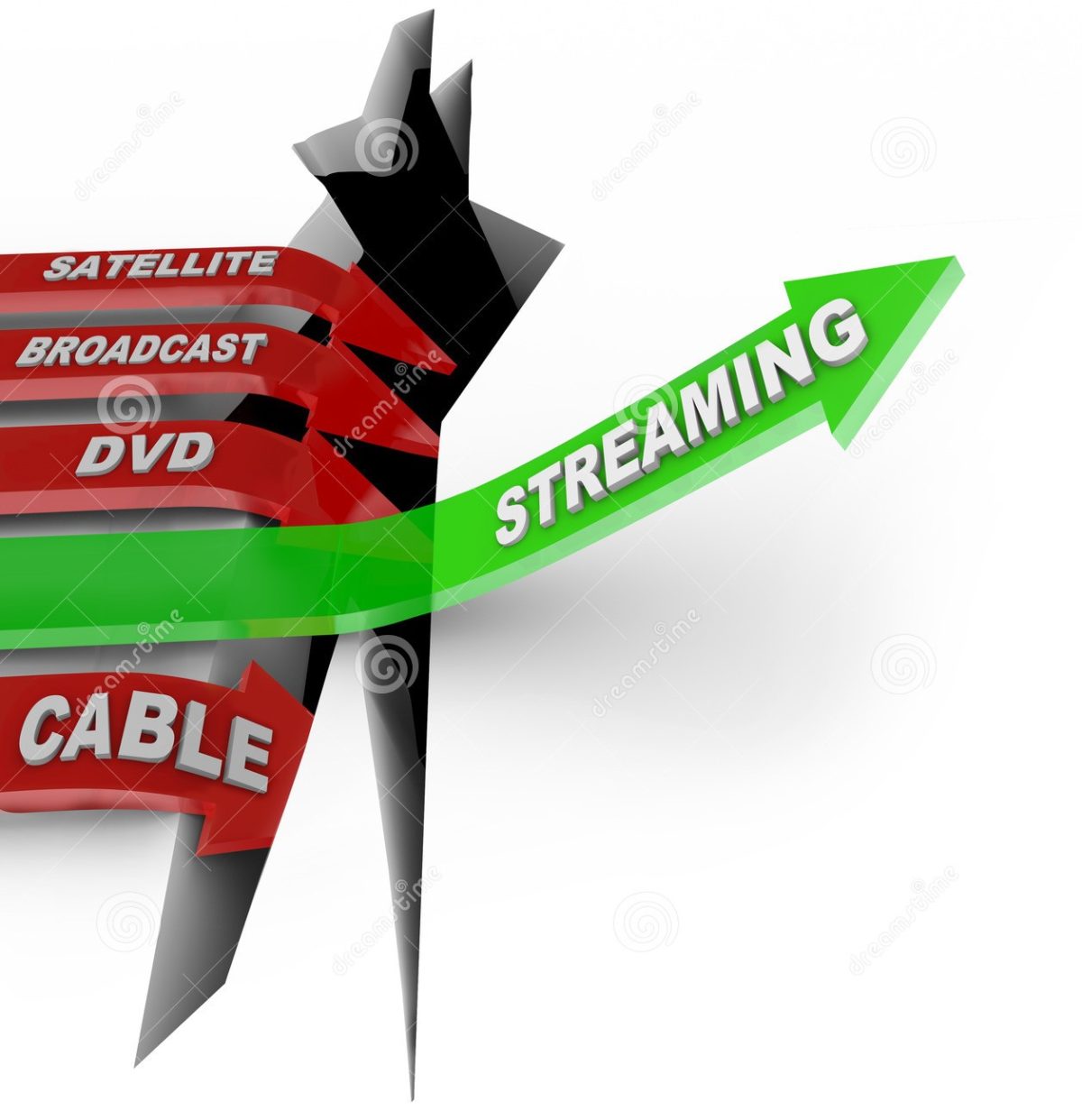Almost everybody has one at home: a TV. A lot of the TV’s that are being sold nowadays are so called smart TV’s, or are made smart with devices like google Chromecast. What makes them smart is the option to connect to the internet and make use of apps. This in combination with the ever growing streaming services provided online could be a potential threat for the traditional pay-TV market(cable, satellite, or telco-TV) as we know it. Television executives are already sounding the alarm. With a 3% decline in the overall TV viewing time in the U.S. in 2015, were 50% was accounted for by Netflix, the question to ask is: Is the traditional pay-TV really going to be replaced with streaming services, or is the ‘death of TV’ we hear about just an illusion?
Recent research from Marketing Charts in conjunction with Newfronts claims that viewers prefer digital video to primetime TV. The results show that people associate streaming services with terms such as “innovative”, “exciting”, “edgy”, and “worth my time”. And with a recent survey from AllFlicks stating that 75.5% of people who have experience using Netflix are convinced that a streaming service like Netflix is the ready replacement for traditional TV, the end for traditional pay-TV seems to be just around the corner. But still almost every household has a pay-TV contract. A big explanation seems to be imbedded in age difference.
The role of age
Age seems to be an very important factor for the liking and using of the new ongoing streaming trend. Researches like the one from TDG Research show a distinctive age gap in TV viewing between younger and older Americans. The researchers asked adult broadband users who were using traditional TV as well as subscription services the following question: “if you had to choose between traditional pay-TV service (cable, satellite, or telco-TV) and subscription streaming video services, which would you choose?”. As you would expect the responses differed strongly by age group as shown in the table below. The older people tend to stick more to the traditional way of watching TV while the younger generation prefers an subscription on the streaming of videos. This result is backed up with other study’s worldwide confirming this distinctive distribution, such as the figure released by Ofcom, showing the results in the UK.


It is clear that young people are driving down the average time spend watching traditional TV while the older generations are keeping traditional TV alive. With an increase in supplied streaming services more and more consumers are shifting towards streaming, giving them the possibility to watch what they want, when they want. This makes it hard to imagine a future with traditional TV as we know it. However I wouldn’t call it the ‘death of TV’. With networks such as HBO and CBS already having launched their own online offerings it is clear that traditional TV channels are evolving and finding ways to survive, extending beyond the traditional television screen and including custom (not full TV package) programming from new sources that can be accessed in new ways. This in combination with TV companies pivoting their business models to distribute on social platforms and the formation of partnerships with digital media brands to create new content will probably secure the future of TV companies for the following years to come.
So, will streaming change the way we use our television as the competition becomes increasingly direct in the years to come? It’s definitely something that’s worth keeping an eye on.
References
BI Intelligence. (2016, July 12). More young people are watching less traditional TV. Retrieved from http://www.businessinsider.com/more-young-people-are-watching-less-traditional-tv-2016-7
Loechner, J. (2016, June 01). Traditional TV vs. Streaming Video; It’s In The Eyes/Age Of The Viewer. Retrieved from http://www.mediapost.com/publications/article/276939/traditional-tv-vs-streaming-video-its-in-the-ey.html
Lovely, S. (2016, March 02). 76% Of Netflix Subscribers Think Netflix Can Replace Traditional TV. Retrieved from http://cordcutting.com/76-of-netflix-subscribers-think-netflix-can-replace-traditional-tv/
Spangler, T. (2016, March 03). Netflix Caused 50% of U.S. TV Viewing Drop in 2015 (Study). Retrieved from http://variety.com/2016/digital/news/netflix-tv-ratings-decline-2015-1201721672/

